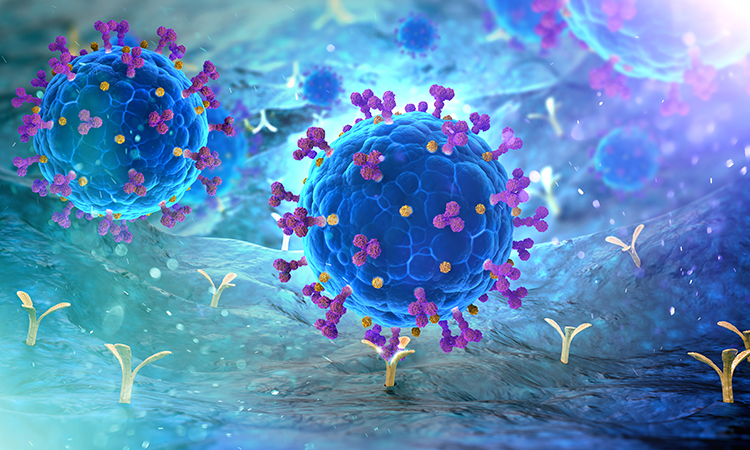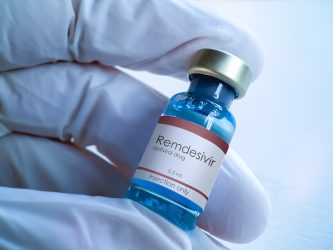Screening for COVID-19 drugs
Posted: 22 June 2021 | Professor Arvind Patel (University of Glasgow) | No comments yet
With the COVID-19 pandemic ongoing, new therapeutic drugs to combat SARS-CoV-2 are still required. In this article, Professor Arvind Patel from the Medical Research Council (MRC) – Centre for Virus Research (CVR) at the University of Glasgow spoke with Drug Target Review’s Victoria Rees to discuss the work being done to identify or repurpose COVID-19 drugs, as well as the importance of ensuring new therapeutic entities are effective against SARS-CoV-2 variants.


“CRUSH is a facility dedicated to supporting and accelerating COVID-19 antiviral innovation. We have generated a variety of relevant tools2 including different human cell lines that express host factors that are required for SARS-CoV-2 to enter the cells. We also have a vast panel of antibodies that we have generated against all the proteins of SARS-CoV-2,” Patel said. “Another resource we have is three-dimensional (3D) organoid-based airway systems to study SARS-CoV-2 infections, which is typically a more physiologically relevant model.”
Screening at CRUSH
Patel explained that at CRUSH, there is the drug screening pipeline and the drug resistance pipeline. The former is to identify or repurpose drugs as soon as possible and the latter to identify any drug or immune-resistant virus variants in order to accelerate the investigation process.


Another aspect of the screening process that Patel highlighted is the drug combination studies at CRUSH. As a proof-of-concept, the researchers at the facility can show whether two nucleoside analogues put together in a screening platform have an additive or synergistic effect in terms of individual virus infection.
Screening throughput
At the moment, the pipeline at CRUSH is medium‑throughput, Patel said. Currently, the researchers carry out screens in a 96‑well plate. The process is therefore not currently automated but with the facilities and resources available, they can screen 40‑80 compounds at a time depending on a screen layout, including proper quantitative evaluation.
The focus of CRUSH is not just limited to COVID-19”
“As part of our plans to move to high-throughput experiments, we have obtained funds to procure new robotic systems which are expected to be in place soon. This will allow us to move to a 384‑well format, enabling the screening of large compound libraries,” Patel said. He highlighted that establishing this automated system will be no trivial task. Following the setting up of the instrument, the researchers will then need to conduct some proof‑of-concept studies to make sure that the technical aspects of the relevant assays and the equipment work as they should.
Further tests
Other facilities at CRUSH include animal models that can be used to evaluate possible hits that are identified.
“We have just recently set up a mouse model and a hamster model is on the way, which should probably be in a month’s time,” Patel said. “These animal models will be very useful to eventually evaluate possible hits that we get by testing in in vitro systems.”
Studying SARS-CoV-2 variants
“SARS-CoV-2 is a positive strand RNA virus, so the RNA of the virus itself is infectious upon transfection into cells. We have generated a system called the reverse genetics system whereby we produce plasmid DNA clones that incorporate the entire genome in a complementary DNA (cDNA) form,” explained Patel. “That genome is placed under a particular promoter, such as a T7 or cytomegalovirus (CMV) promoter.”
Once the researchers have generated the plasmids using a technique called Transformation Associated Recombination (TAR) in yeast, Patel said that they can use that plasmid as a template to produce an RNA transcript if the assembled cDNA genome is placed under the T7 RNA polymerase promoter. Such a transcript can be produced in vitro which is very similar to the viral genome.
As part of our plans to move to high-throughput experiments, we have obtained funds to procure new robotic systems which are expected to be in place soon”
Patel then explained that when the researchers introduce the transcripts into cells by transfection, they can generate viruses. This is because the transcripts are replication competent, so they will initiate a virus lifecycle. Alternatively, plasmids carrying the viral cDNA genomes under the control of the CMV promoter can be directly transfected into cells to rescue viruses.
“What we can also do is modify the genome in specific places, or in specific viral genes. For example, we can alter the Spike (S) protein or other proteins. Most of the modifications produced to date have been in the S protein because SARS-CoV-2 uses this to infect cells, making it a drug target,” Patel said. “If you have a particular mutation that is showing resistance to a particular drug or an antibody, then that gives an indication of the mechanism of the resistance that is involved.”
He emphasised that these variants will be highly useful when testing potential drugs because therapeutics targeting the S or other viral protein could also be affected by those mutations. Therefore, it is prudent to have mutant viruses in the pipeline to rapidly screen drugs to identify those that are effective and those that are not.
Conclusion
As the CRUSH facility was established as a consequence of this pandemic, Patel said that the staff were able to carry out crucial COVID‑19‑related research activities despite the lockdowns.
“As we go into the future, new variants are going to arise. We will always be a few steps behind the virus in terms of making new vaccines. This means having an effective drug, or drugs, will also be required to end the pandemic,” Patel said.
Furthermore, the focus of CRUSH is not just limited to COVID-19 – other viruses will be investigated as well to increase preparedness against future outbreaks.
Professor Arvind Patel is an MRC Investigator and a Programme Leader at the MRC-University of Glasgow Centre for Virus Research (CVR), with expertise in molecular virology and antivirus screens. He has been at the forefront of research on several flaviviruses including HCV and Zika virus. More recently, he has extended his interest on coronaviruses, including SARS-CoV-2. Specifically, his work has focused on virus-host interactions, neutralising antibodies, and vaccine and antiviral development. He is also an Academic Head of CVR-CRUSH.
References
- University of Glasgow – University news – COVID-19 drug screening hub at the University of Glasgow begins work [Internet]. Gla.ac.uk. 2021 [cited 3 June 2021]. Available from: https://www.gla.ac.uk/news/headline_788517_en.html
- Rihn S, Merits A, Bakshi S, et al. A plasmid DNA-launched SARS-CoV-2 reverse genetics system and coronavirus toolkit for COVID-19 research. PLOS Biology. 2021;19(2):e3001091.
- Szemiel A, Merits A, Orton R, et al. In vitro evolution of Remdesivir resistance reveals genome plasticity of SARS-CoV-2. bioRxiv preprint. 2021; doi.org/10.1101/2021.02.01.429199
Related topics
Drug Development, Drug Discovery, High-Throughput Screening (HTS), Proteomics, Screening
Related conditions
Covid-19
Related organisations
Beckman Coulter, Horizon Discovery, LifeArc, Medical Research Council (MRC), Merck, University of Glasgow, X-Chem








